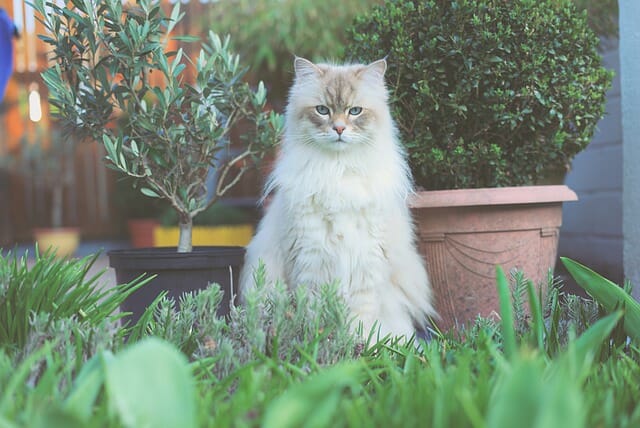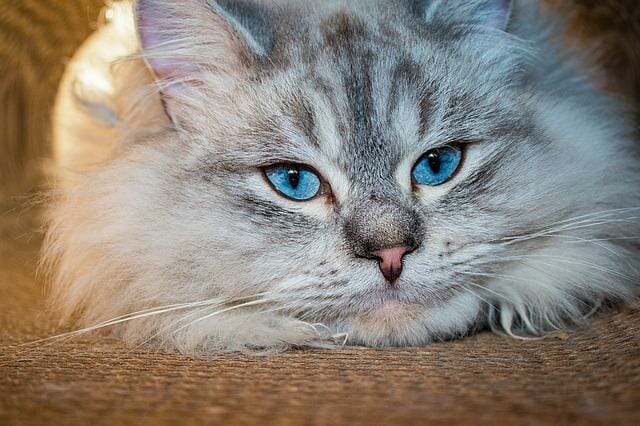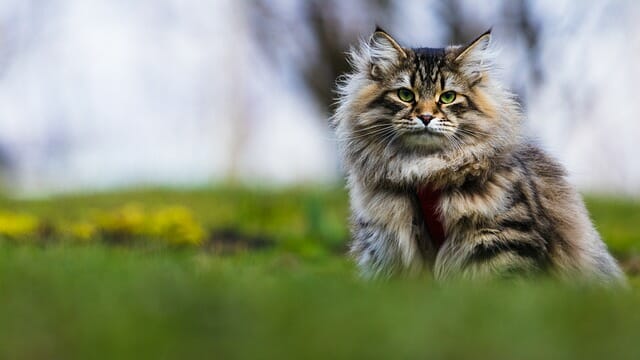How to Identify a Siberian Cat: Distinct Characteristics of Siberian Cats
To identify Siberian cats, look for their unique features. Siberian cats have distinctive characteristics that make them easy to identify, such as their muscular build, thick coats, fur colors and patterns, wedge-shaped heads, high cheekbones, and outgoing personalities.
If you’re unsure whether a cat is a Siberian, you can also check for breed-specific characteristics such as the production of fewer allergic reactions in some people. However, the best way to determine if a cat is a Siberian is to consult a reputable breeder or a veterinarian who can help you identify the breed based on its physical characteristics.


Table of Contents
Characteristics That Will Help You Identify a Siberian Cat
Size and Build
How big is a Siberian cat? Siberian cats are a medium to large-sized breed with a muscular build. They are usually larger and heavier than most other domestic cat breeds, and adult males typically weigh between 15 and 20 pounds, while females usually weigh between 10 and 15 pounds.
Both males and females have sturdy and muscular builds. Their bodies are rectangular, with broad shoulders and powerful chests. Their legs are medium in length and are muscular and thick-boned. They have large, rounded paws with tufts of fur between their toes. This helps to insulate their paws in cold weather and gives them good traction on slippery surfaces.
Siberian cats have a thick and bushy tail that is usually as long as their body, and the tail is flexible and often used to communicate emotions, such as when the cat feels playful or relaxed.
Do you know? Tortoiseshell Point Siberian cat is the most beautiful Siberian cat because of their muscular build, round face, and large, expressive eyes.
Coat
Siberian cats have long, thick, and luxurious coats, and their fur can grow several inches, making it one of the longest cat breeds. The fur is thick and fluffy, with a slightly oily texture that helps repel water, making it ideal for cold climates.
These cats have a dense and soft undercoat that helps to keep them warm in cold weather. This undercoat is shed twice a year, which can result in significant shedding during those times. Due to their long and thick coat, Siberian cats require regular grooming to prevent matting and tangles. They should be brushed at least once weekly and more frequently during shedding season.
Colors and Patterns
Siberian cats can be solid-colored in various hues, including black, white, blue, red, cream, and chocolate. The fur may have a subtle shading or a darker or lighter color on the tips of the hairs, known as “tipping.”
Many Siberian cats have tabby patterns, distinctive stripes, or spots on their fur. The most common tabby patterns are classic (also known as spotted), mackerel (vertical stripes), and spotted (large spots or rosettes).
Some Siberian cats have colorpoint patterns, which feature a darker color on the face, ears, tail, and feet, while the rest of the body is lighter. The most common colorpoint patterns are seal point, blue point, and lynx point.
Siberian cats can also be bi-color or tri-color, which means they have two or three distinct colors on their fur. Bi-color cats may have white on their paws, chest, or belly, while tri-color cats have a combination of black, red, and white. These cats can also have a range of eye colors, including green, gold, blue, and copper. Some cats may have odd-colored eyes, meaning each eye is different.
Facial Features


Siberian cats have round faces with broad foreheads and small, rounded ears that are set apart. The face is also adorned with full cheeks and a rounded chin. They have large, round eyes that are set wide apart. The eyes can be green, gold, blue, or copper and often have a slightly almond shape. The eyes are one of the most expressive features of the Siberian cat’s face.
These cats have strong jawlines and well-developed teeth. The bite is typically straight, and the teeth are white and clean. The cheeks of the Siberian cat are full and fluffy, which adds to their overall charm and cuteness. The cheeks are also covered in soft fur that is often lighter in color than the rest of the fur on the cat’s face.
Also, the nose of a Siberian cat is wide and slightly concave, with prominent whisker pads on either side. The whisker pads are covered in soft fur, which gives them a rounded appearance.
It’s important to note that while Siberian cats have distinct facial features, there can be variations in their appearance. For example, not all Siberian cats will have the same facial structure, and some may have a slightly different shape or size to their eyes, nose, or jaw. Therefore, it’s important to look for a combination of these characteristics when identifying a Siberian cat based on its facial features rather than relying on just one feature.
Personality


Before buying a Siberian cat, it’s important to know its personality. Siberian cats are extremely affectionate with their owners, love to cuddle, and often follow their owners around the house to be close to them. They are very playful and energetic, even into their adult years, and love to play with toys and will often invent their games to play.
These cats are highly intelligent and quick learners. They can be trained to do tricks and respond well to positive reinforcement. Siberian cats are also very social and enjoy the company of other animals and humans. They often greet their owners at the door and enjoy being around people.
Siberian cats are loyal to their owners and often form strong bonds with them. And are known for being protective of their owners and will often follow them around the house to keep an eye on them. While Siberian cats enjoy being around people, they are also independent and often entertain themselves when their owners are not around.
